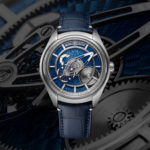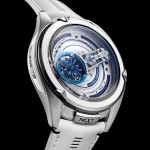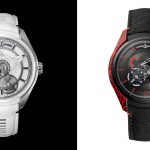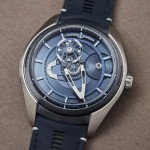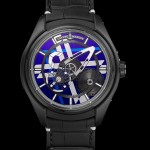Hands On: Ulysse Nardin Freak One Navy Blue
Iconic, yet fresh.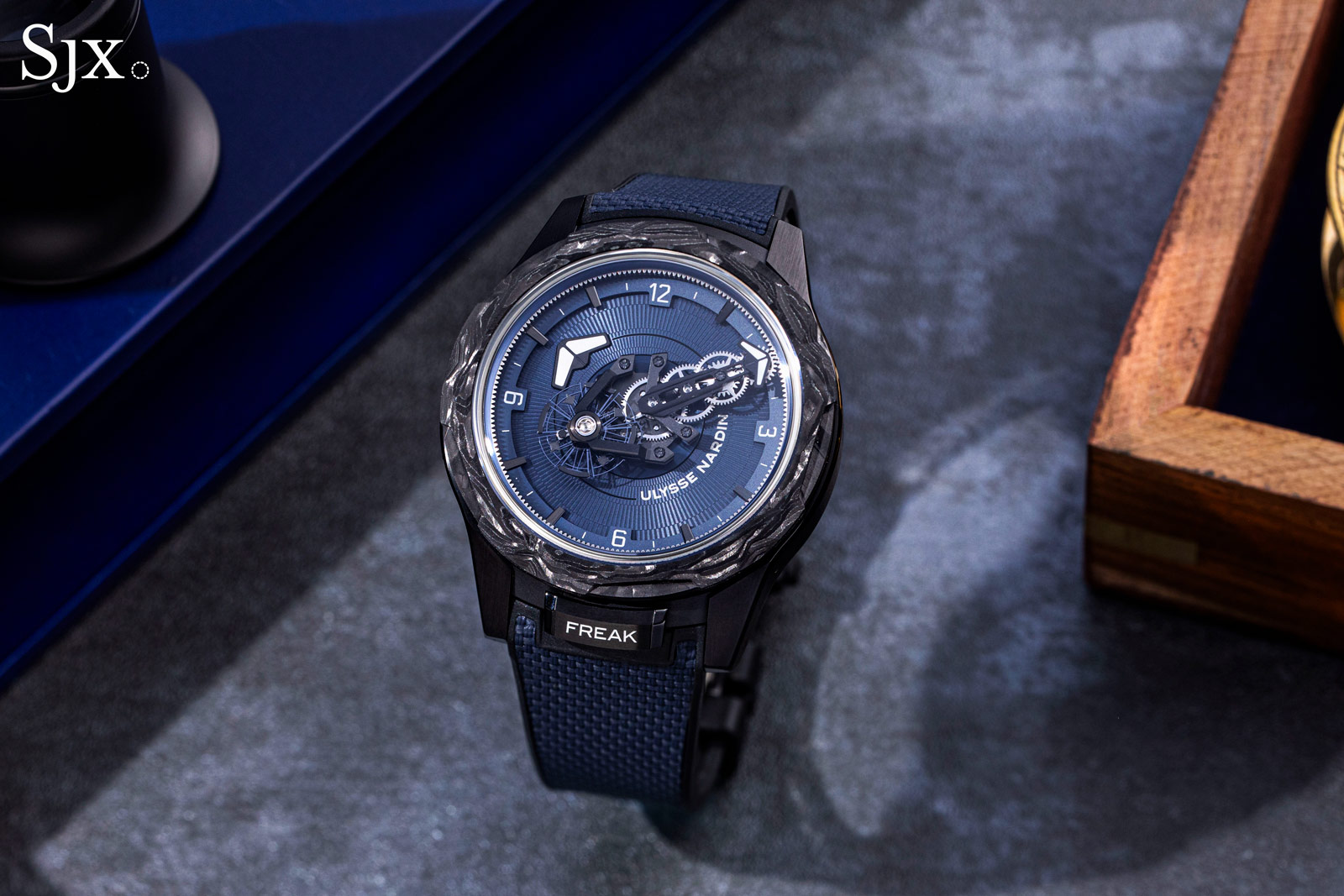
Ulysse Nardin has been breathing new life into its flagship Freak collection for the past several years, and the latest model to benefit from this focus is the Freak One Navy Blue, featuring a blue dial that pays homage to the original Freak from 2001. And that’s fitting, because the Freak One collection is a retelling of the story, imagining what the Freak would look like if it were to debut in the present day.
Initial thoughts
I’ve always had a great deal of respect for the Freak, though I admit I have not always been attracted to the aesthetic. That started to change for me when the design language started evolving to its current, more futuristic form.
The Freak Vision of 2018 was the first step in this direction, but the model that really convinced me was the Freak S Nomad launched earlier this year. What makes these watches so satisfying is the way the mechanics have been reimagined to become the central design element; the time is revealed as the movement walks its way around the dial.

In many ways, the One can be seen as the little brother to the Freak S. At 44 mm, the One is a fraction smaller than its more complicated sibling, but shares much of the same construction and materials.
The case is titanium and finished with a black DLC coating, while the bezel is made of recycled carbon fibre composite. Like the Freak S, the One wears smaller than its dimensions suggest, thanks in part to its muted colours and the way the central carrousel draws the eye. The materials also mean it is lightweight, more than expected given the size. This contrasts with the earlier generations of Freak models, which were often in precious metal and unwieldy in terms of weight.
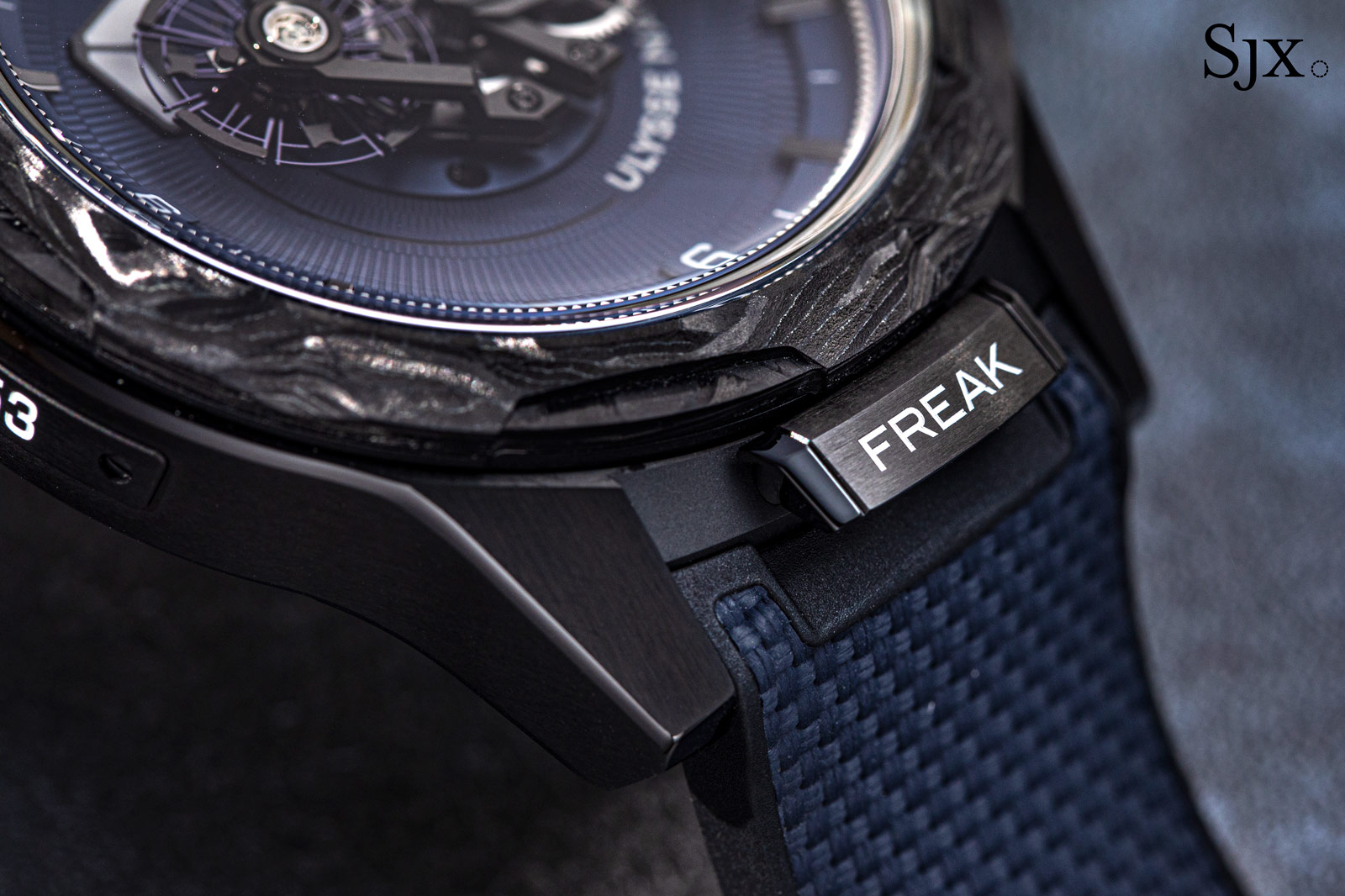
The traditional bezel locking tab located at six o’clock
The One is powered by the UN-240, a one-hour carrousel movement that’s automatic with 90 hours of power reserve. Like its bigger brother, the One benefits from the most efficient automatic winding system in the industry, with four winding pawls to transmit energy to the barrel up to twice as fast as traditional automatic systems.
At US$66,800, the Freak One is a lot of watch for the money, especially considering this is less than half the price of the Freak S, while offering well over half the technical and aesthetic content. Even in this price segment, the competitive landscape is narrow; few watches manage to be both iconic and innovative.
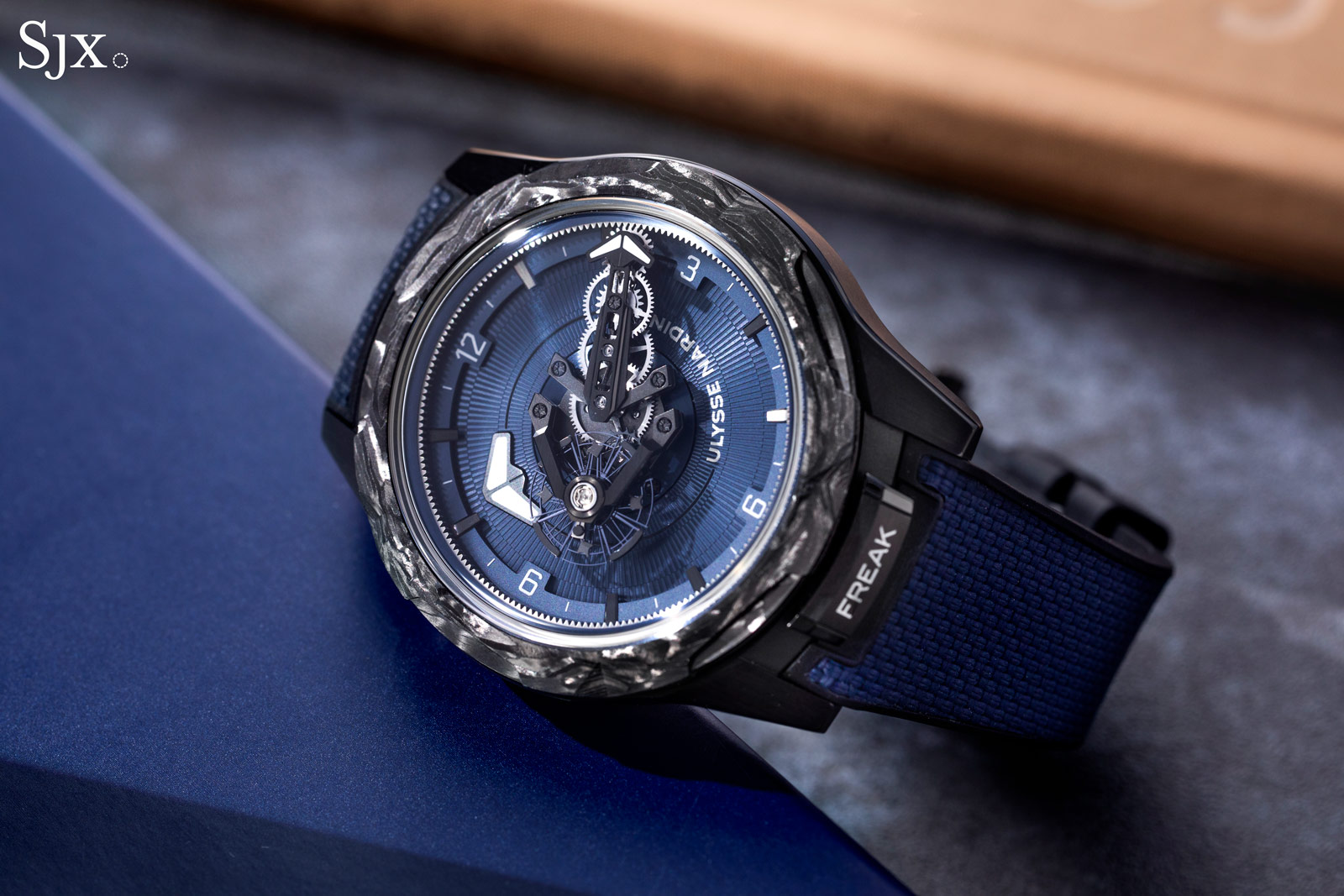
An education on the wrist
Like other Freak models, the One can be confusing, if not overwhelming, at first glance. But that’s okay, since the design and layout of the dial-side components can actually teach the viewer about a mechanical watch movement. In a way, it’s like wearing a watchmaking class on the wrist. The 44 mm diameter of the watch provides ample space to show off the mechanics on the dial.
The main thing to understand about the One is that central carrousel is the minute hand, geared to a fixed ring around the edge of the dial. This entire apparatus is under spring tension from its central hub, with power flowing from the tip of the minute hand through the visible gear train to the escapement. With each oscillation, as the escapement locks and unlocks, freeing the minute hand to ‘walk’ forward little-by-little, completing one complete revolution per hour.
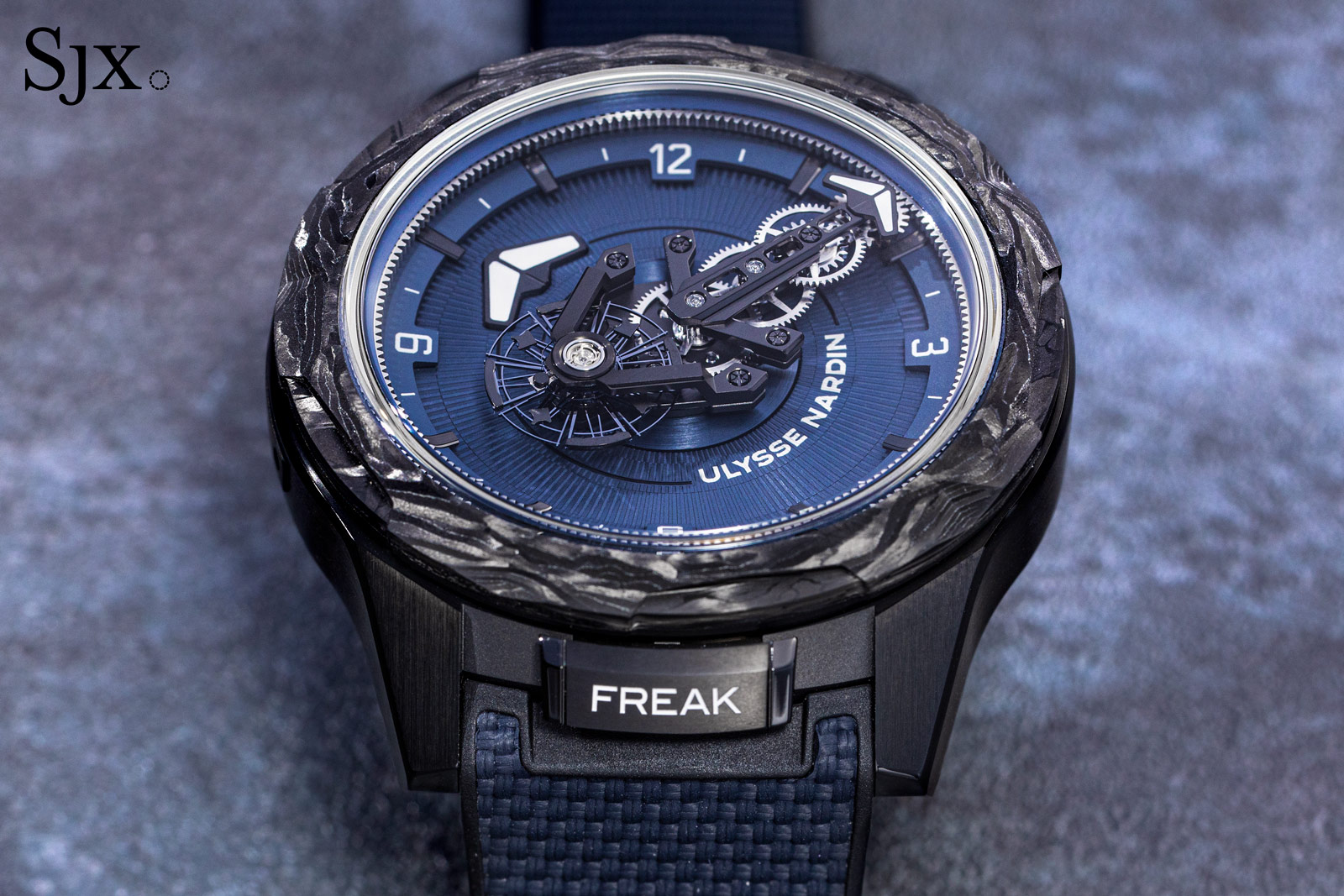
The time shown is 10:08
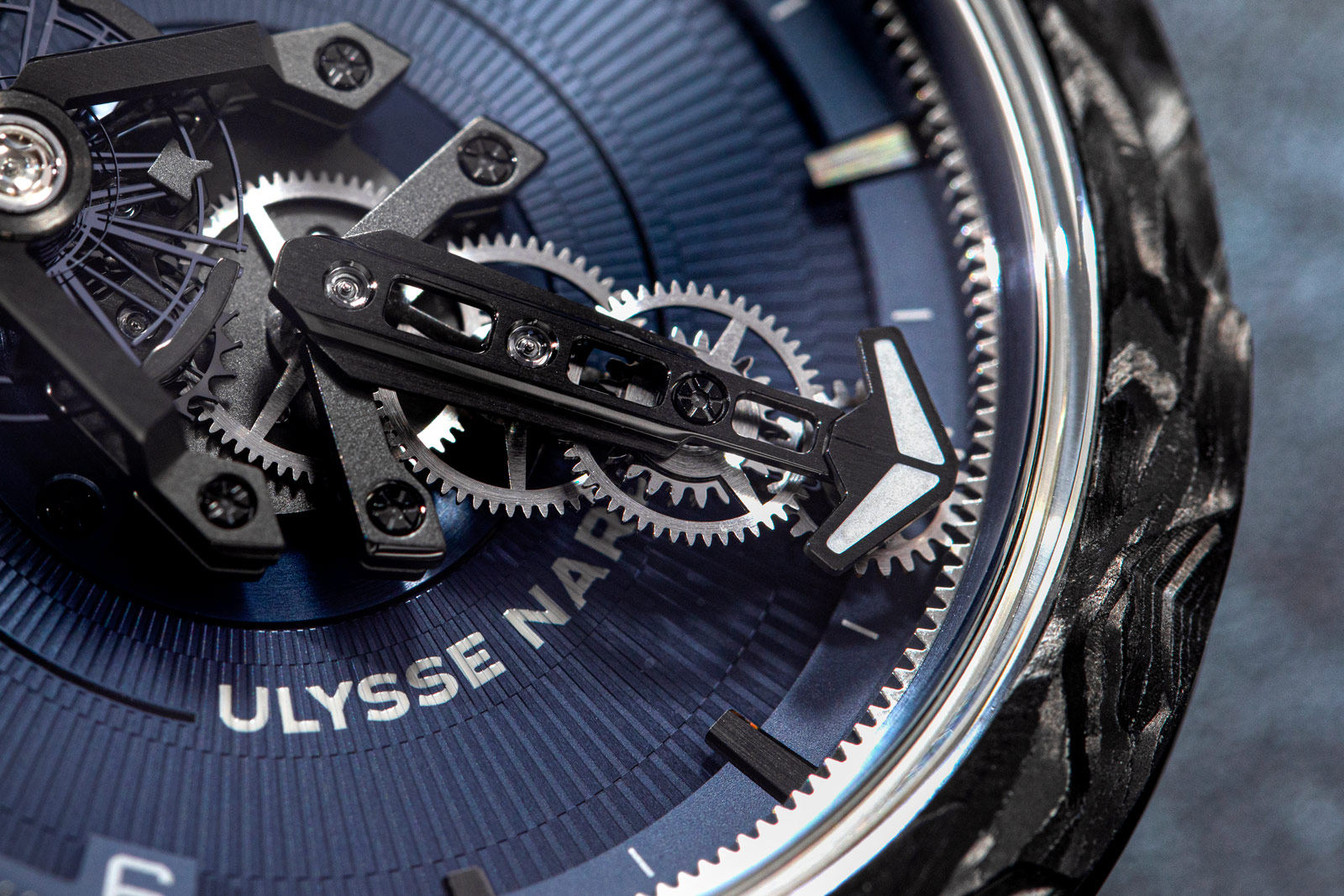
The carrousel forms the minute hand
Chronometrically, this offers benefits similar to those of a tourbillon, since the orientation of the escapement is constantly changing (at least in the vertical position). Of course, most tourbillons rotate 60 time faster, but the overall effect is similar in the long term.
The hour pointer, fixed to a ring in the dial, is geared from the minute hand just like in a conventional watch, making two rotations per day.
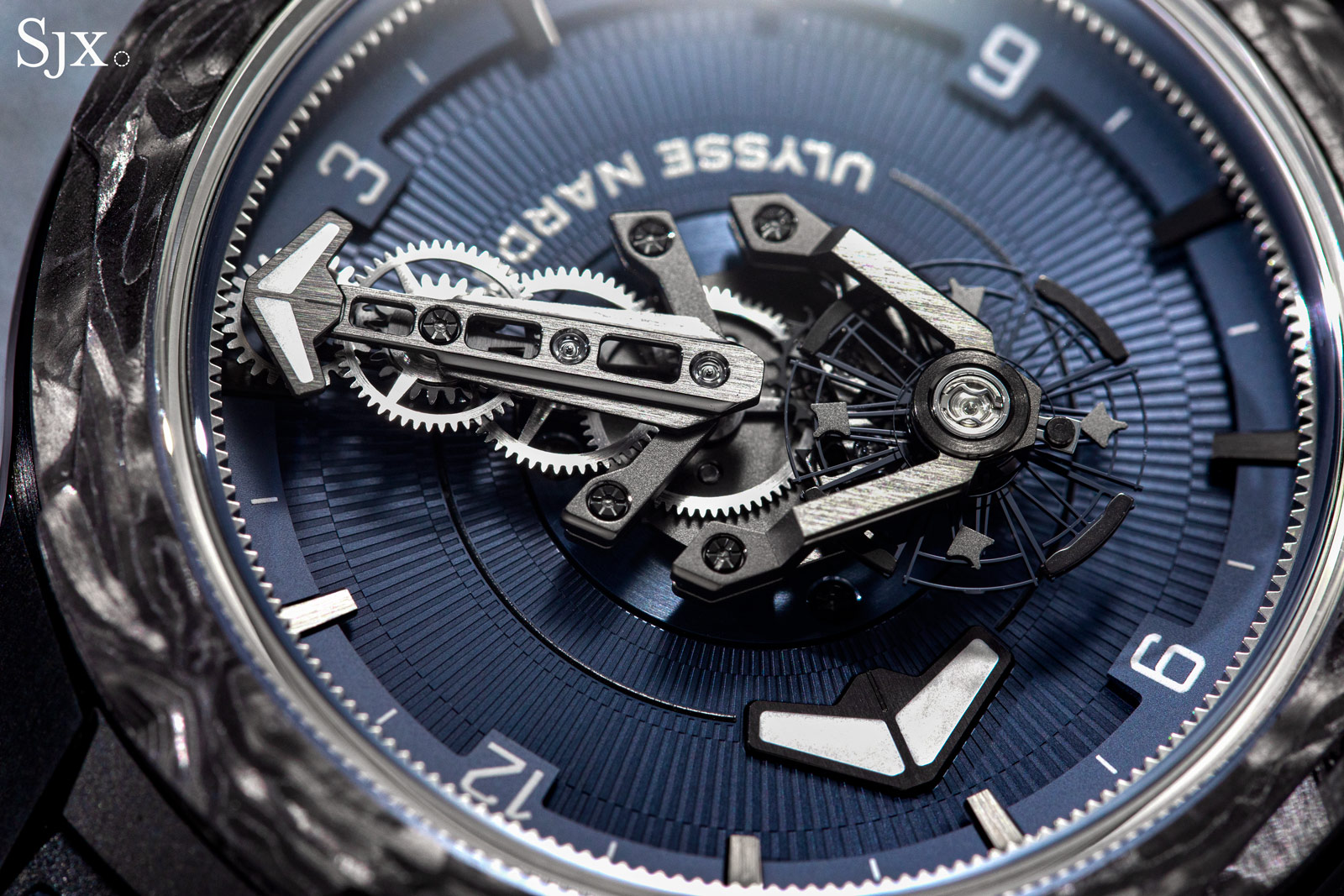
Without a traditional winding crown, setting and winding operations are divided between the front and rear bezels. To set the time, one simply flips in the “FREAK” flange at the six o’clock position and rotates the bezel, which causes the minute hand to rotate.
The bezel itself is made of Carbonium, a type of recycled carbon fiber sourced from the aerospace industry. The bezel action is very secure and satisfying, and the process of setting the time is a pleasure.
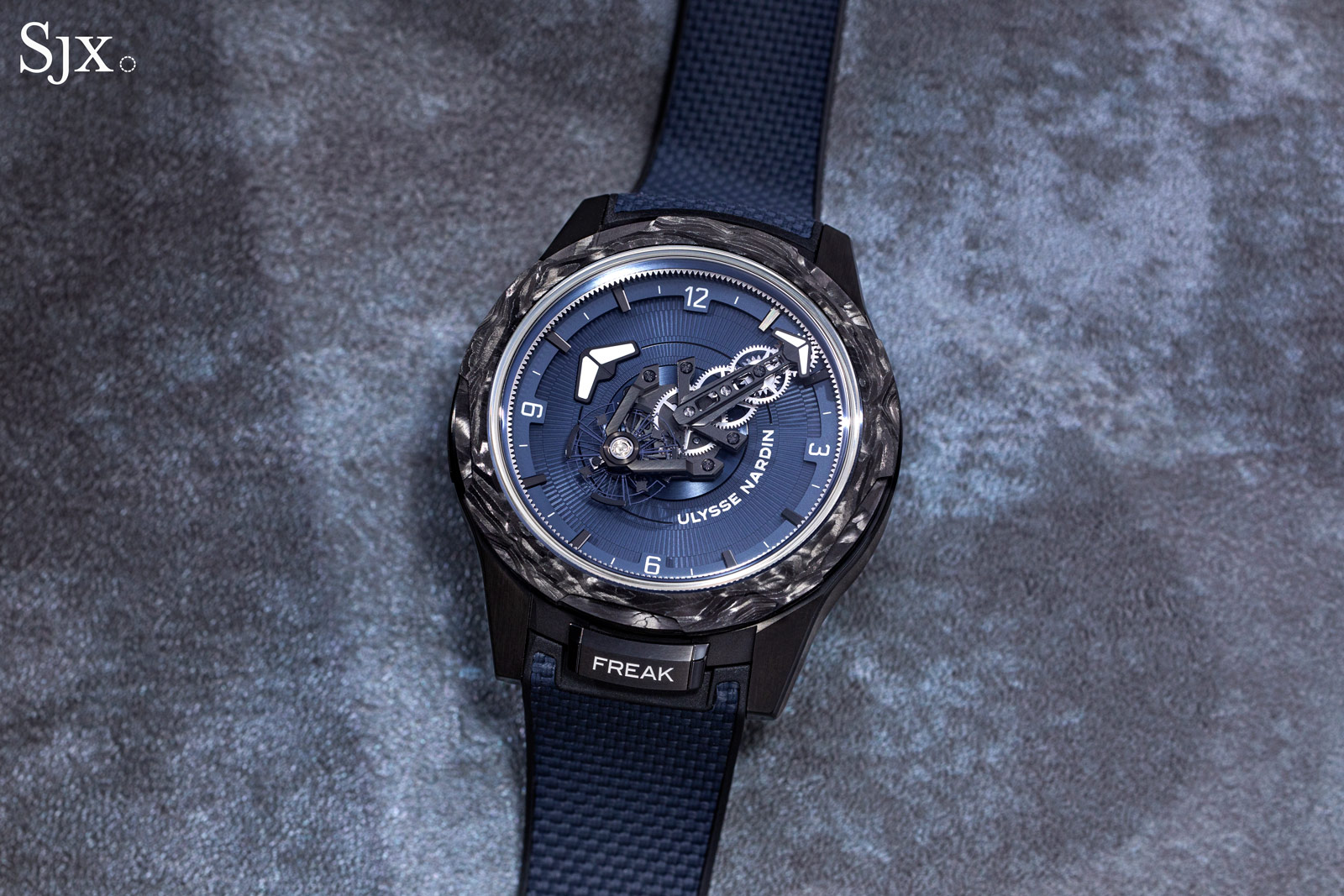
Winding the watch is a bit more tedious, requiring a good grip on the rear bezel around the case back. This was one of the biggest inconveniences of the original Freak, which was entirely manual wind and had a huge mainspring for a seven-day power reserve.
In real-world use, hand-winding the Freak One is not likely a problem, thanks to the novel winding system which operates more efficiently than traditional automatic systems. While the weeklong power reserve of the original is impressive, the Freak One is both more advanced technically and substantially more user friendly.
Flipping the watch over affords a view of Ulysse Nardin’s proprietary Grinder automatic winding system, which uses four winding pawls to substantially increase its winding efficiency. The idea was adapted from Grinders, specialised winches used on racing yachts, which operate on a similar principle. This design inspiration offers pleasing symmetry to Ulysse Nardin’s own history as a celebrated maker of marine chronometers.

The larger Freak S also uses the Grinder system, but compared to its more-complicated sibling, the One offers an extra 18 hours of power reserve while oscillating at a higher frequency of 3 Hz, rather than the 2.5 Hz. From this, one can infer that the One is more energy efficient, since the flow of energy is not watered down through a differential, and because it has just one escapement rather than two.
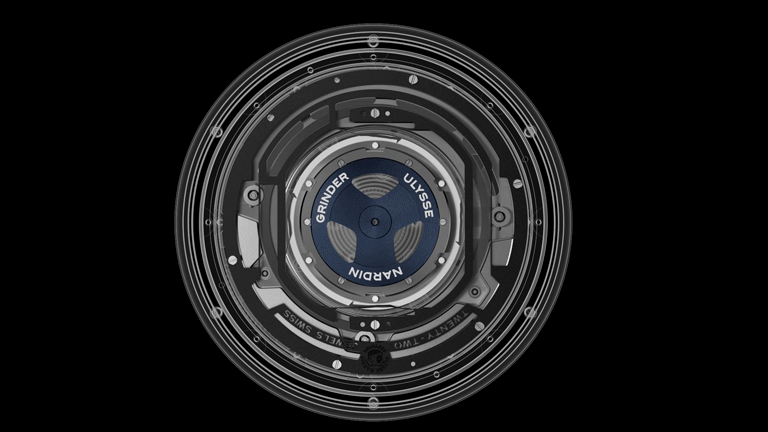
The Grinder system in action
Silicon chalet
Like its predecessors, the Freak One uses silicon prominently and proudly. Though silicon is now widely used in the industry, it’s worth noting that Ulysse Nardin was the first brand to apply this material to a production watch, and remains one of the few brands in the industry with in-house expertise with this material, thanks to its ownership stake in Sigatec.
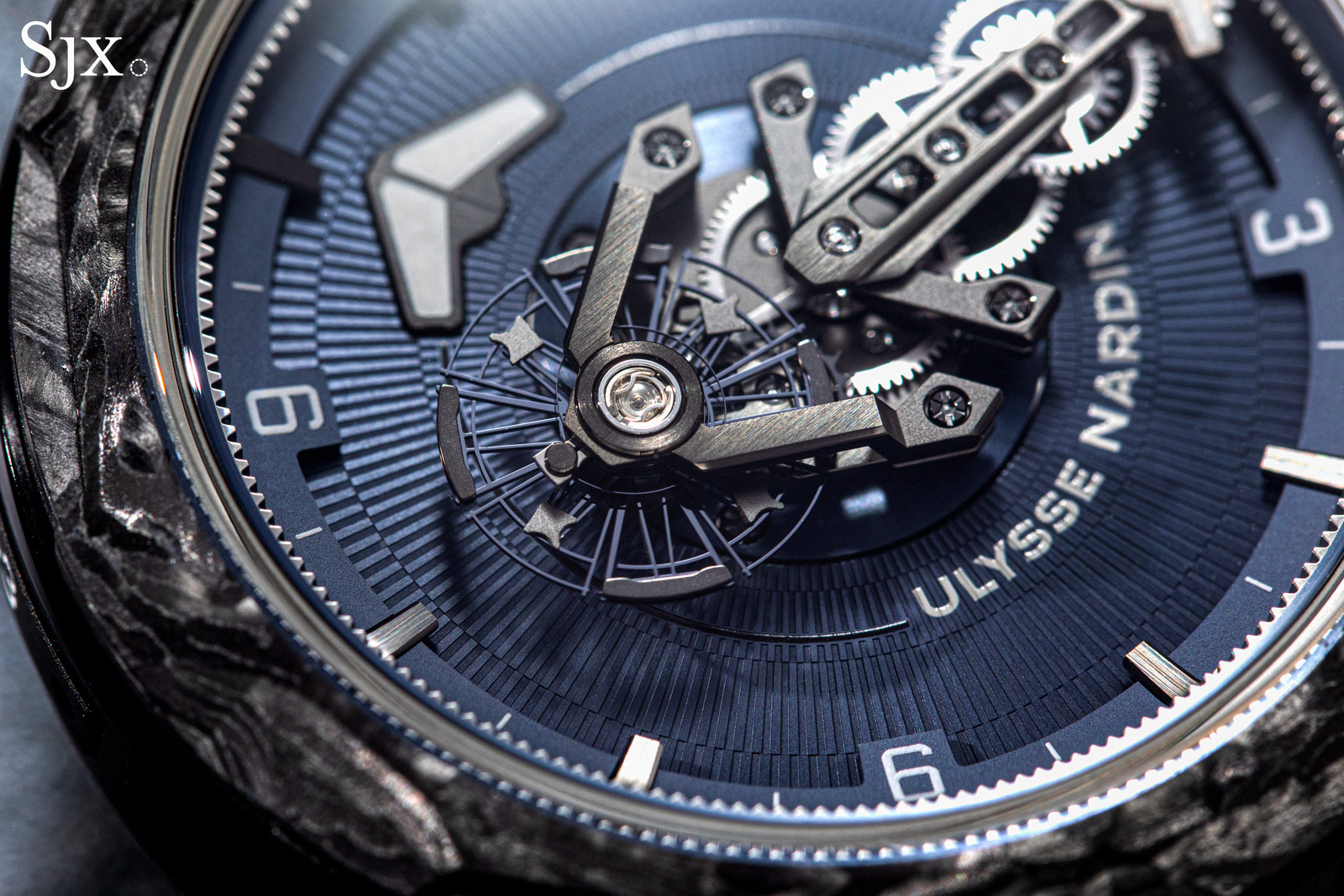
![]()
While the composition of the silicon material has remained unchanged since 2001, an impressive achievement in itself, the brand has developed new production techniques that enable it to produce a wider variety of components in silicon. In the case of the One, the escapement, hairspring, and balance wheel are all made of silicon.
Furthermore, the escapement components are coated in a synthetic diamond coating called DIAMonSIL to ensure almost friction-free operation. While this setup can technically work completely dry, the brand has found that using a small amount of oil for the initial impulse helps accelerate the balance to full amplitude.
![]()
Closing thoughts
Horological innovators are rarely design icons. Technical innovation is often imperceptible and difficult to understand. On the other hand, many of the watches that have become design icons are pretty traditional under the hood. Case in point, when the Freak One won the “Iconic” prize at the GPHG last year, it was nominated alongside five vintage-inspired watches with eminently traditional movements.
One of the things I’ve always loved about the Freak is that it uses the visual spectacle of the carrousel as a storytelling element, merging technicality and aesthetics. Twenty-three years after the Freak’s debut, the new Freak One executes a complicated balancing act: it manages to look and feel fresh, without losing the critical DNA that has made the Freak a true icon of contemporary watchmaking.
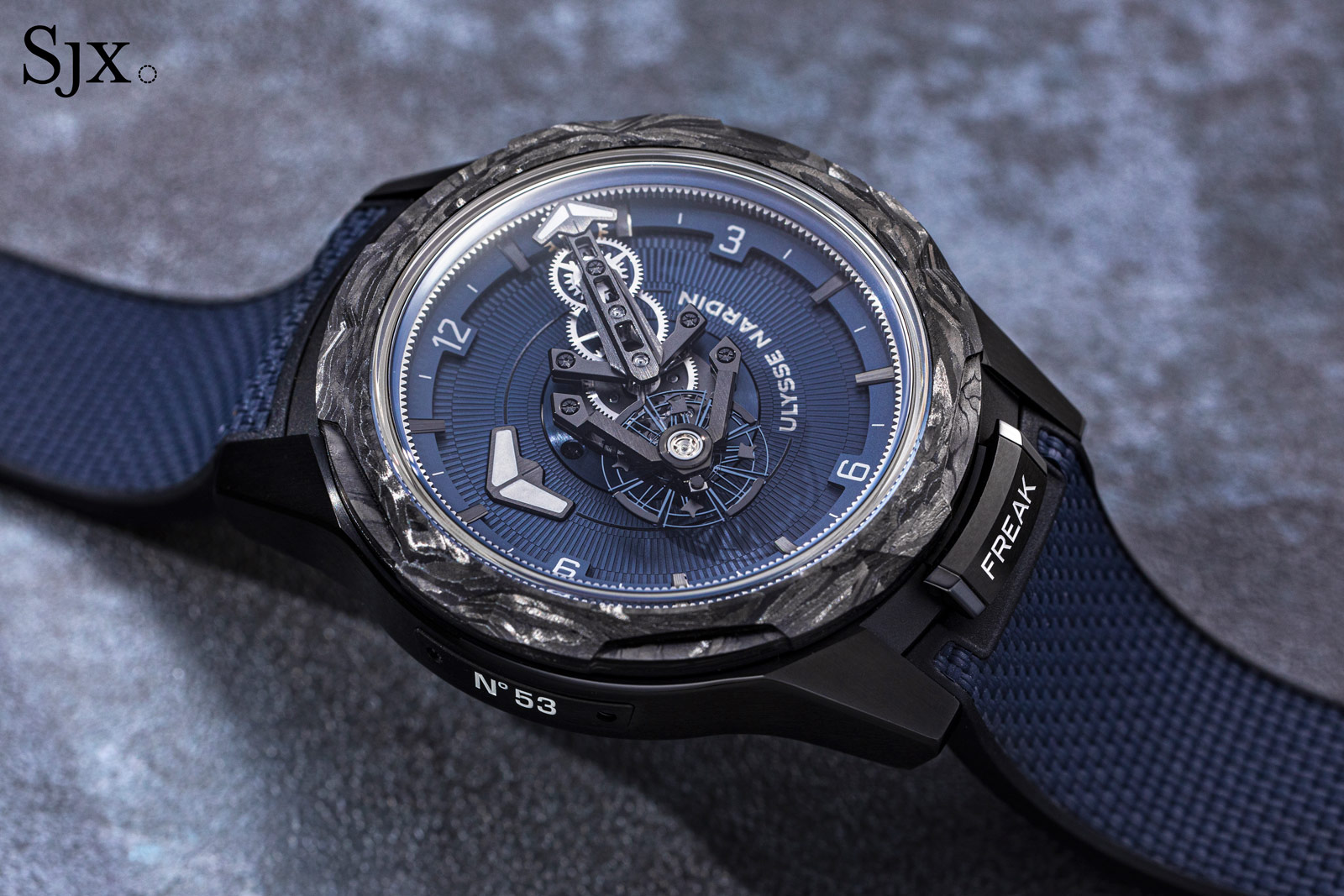
Key facts and price
Ulysse Nardin Freak One Navy Blue
Ref. 2403-500-3A/3A (‘ballistic’ rubber strap)
Ref. 2403-500-3A/3B (rubber strap)
Diameter: 44 mm
Height: 13.37 mm
Material: Titanium
Crystal: Sapphire
Water resistance: 30 m
Movement: UN-240
Functions: Hours and minutes
Winding: Automatic
Frequency: 21,600 vibrations per hour (3 Hz)
Power reserve: 90 hours
Strap: Anthracite rubber or “ballistic” textured strap, with folding clasp
Limited edition: No
Availability: At Ulysse Nardin boutiques and retailers
Price: US$66,800
For more, visit Ulysse-nardin.com.
Back to top.

